Mysterious Water Suspension
At first glance, you might think that you’ve seen this science demonstration attempted by a friend. A glass jar is filled with water and covered […]
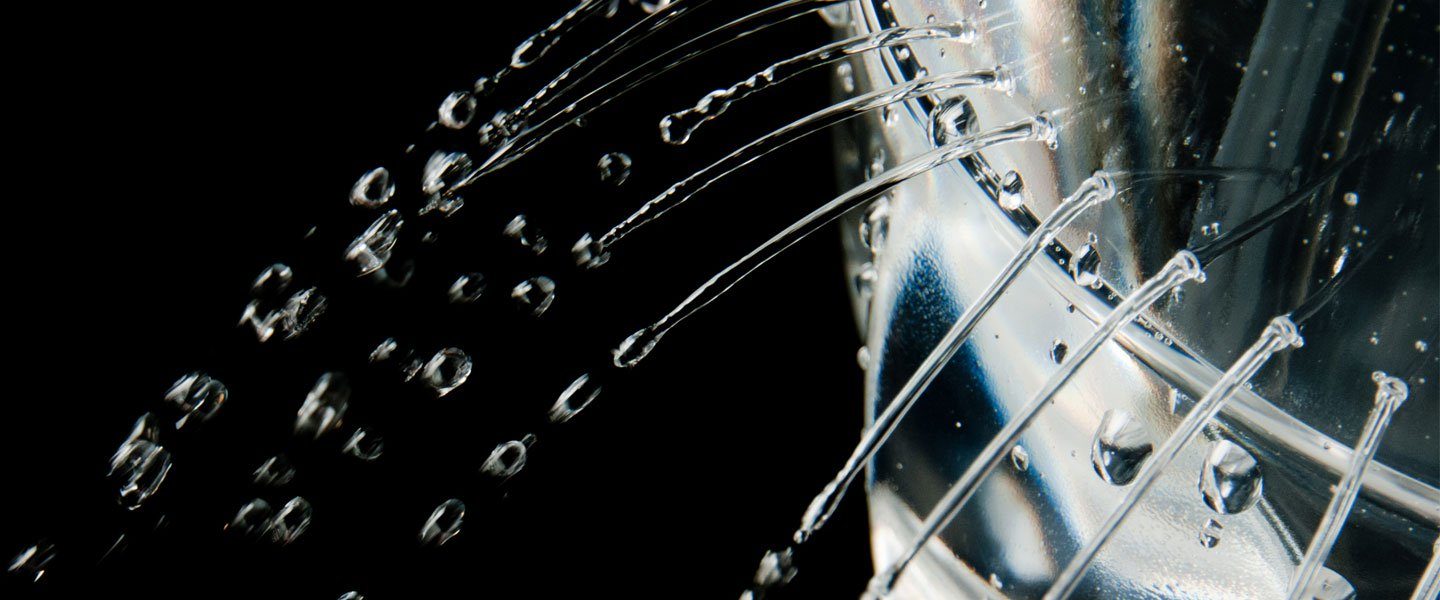
When you receive a package that says “DO NOT OPEN!” what do you want to do? Open it! It’s just human nature. Try this tempting experiment for some guaranteed fun.
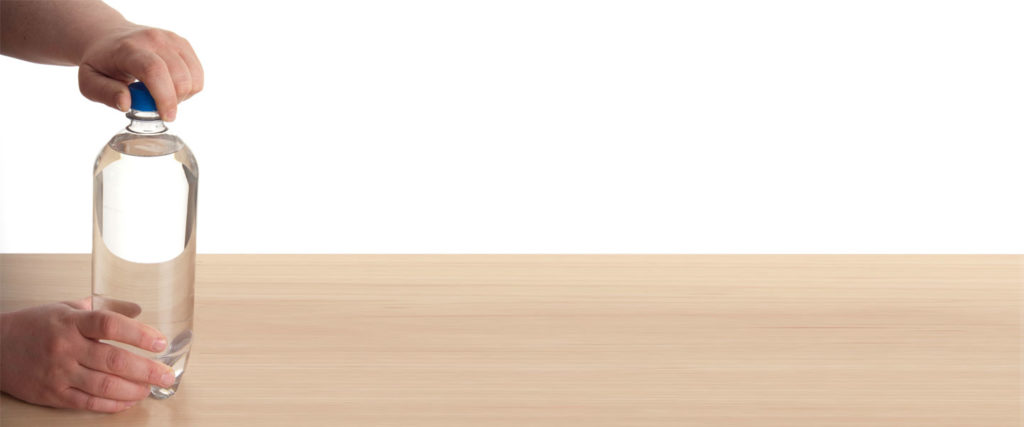
Clean and dry the 1-liter bottle and remove the label.
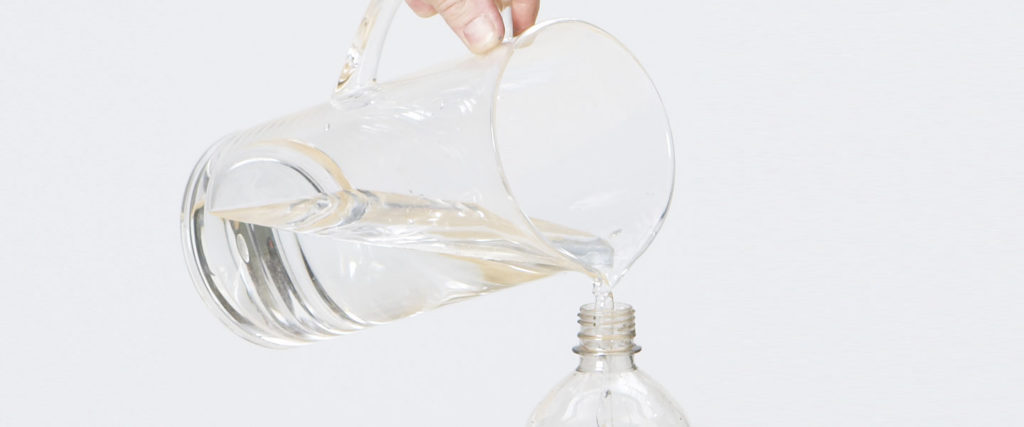
Fill the bottle to the very top with water and twist on the cap.
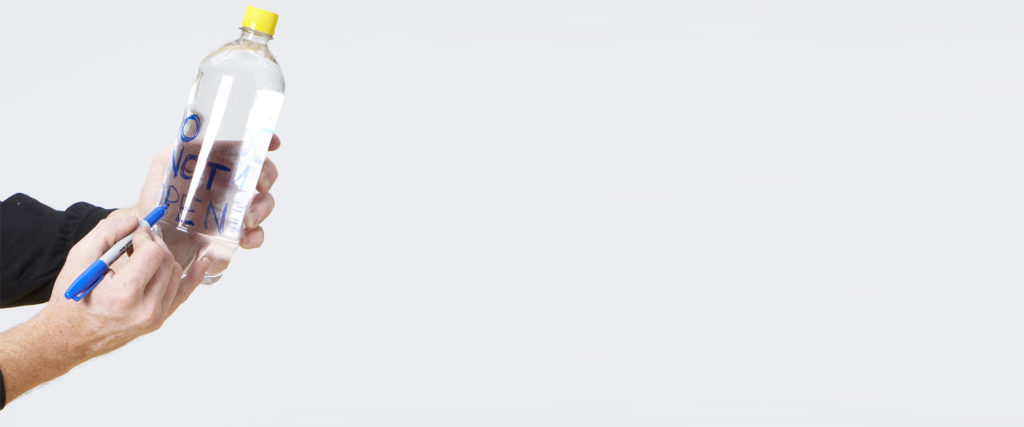
Use the permanent marker to write “DO NOT OPEN!” in fat letters on the bottom half of the bottle.
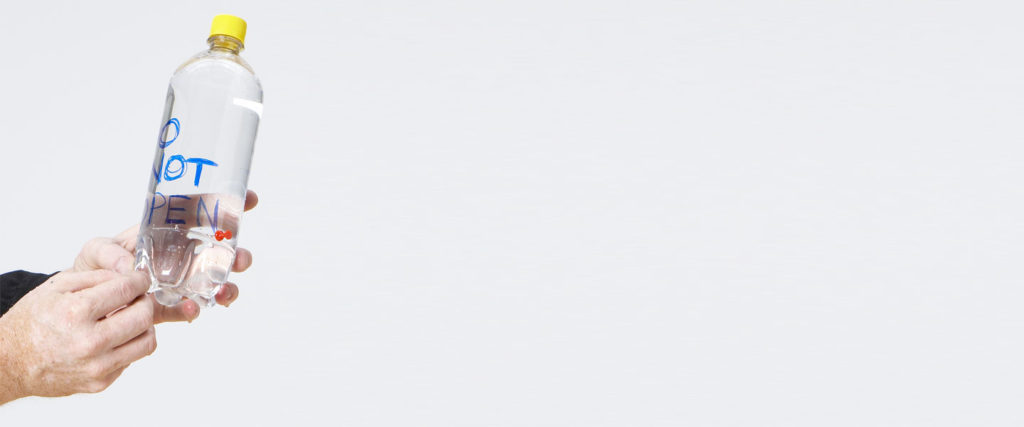
Carefully, use a sharp pushpin to poke a line of five or six holes about an inch (2.5 cm) from the bottom of the bottle. A small amount of water will squirt out as you poke holes in the bottle, but it’s not a big deal. When you’re finished, hold the bottle by the cap (don’t squeeze the bottle or it will start leaking before you’re ready) and give the bottle a gentle wipe down with the towel.
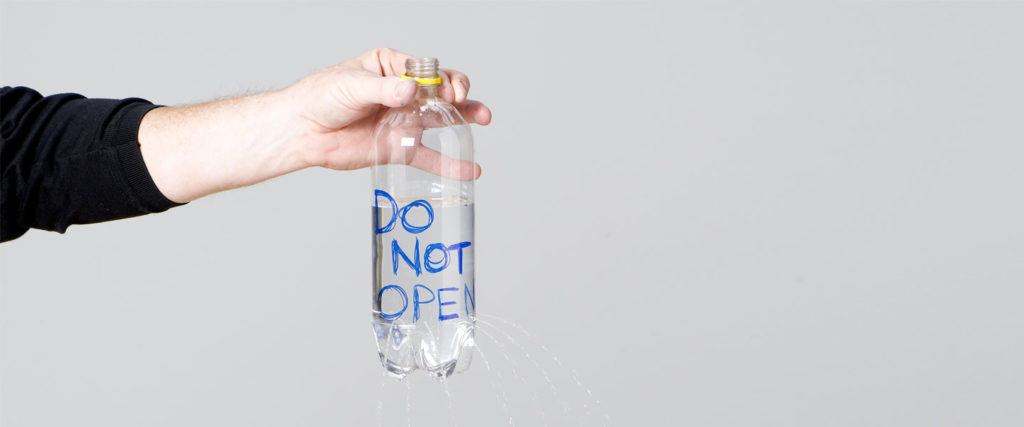
Carefully set the bottle on the kitchen counter (word-side out) where someone can see it as they pass by. Stay close enough to watch what happens. Eventually, someone is bound to ask about the bottle. Play dumb with, “I dunno,” when they ask about it. Let them unscrew the cap and you’ll witness science in action. Water squirts everywhere!
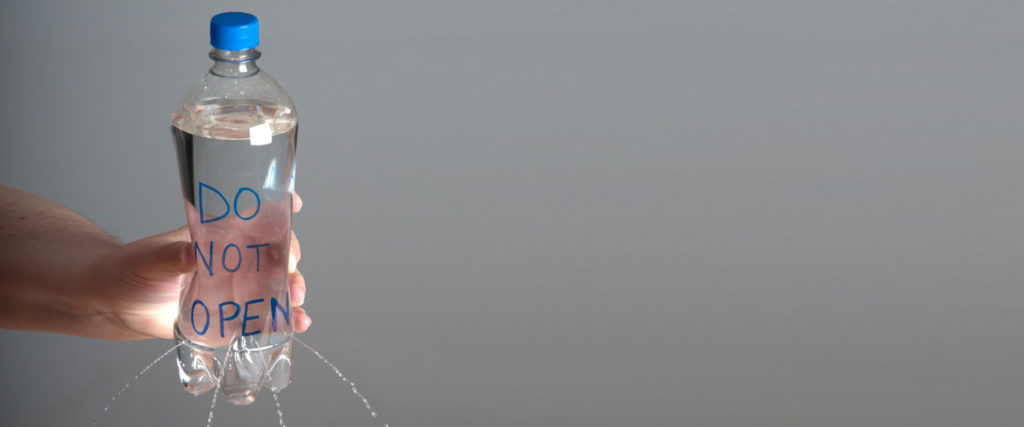
As you test out your newly discovered water management skills, you’ll quickly notice that it’s funnier to watch people just pick up the bottle. Even the slightest squeeze on the sides as they lift the bottle results in water squirting from the holes. Yes, it’s childish . . . but it’s really fun . . . and it’s a great science lesson.
Let’s start by examining an empty soda bottle. Is the bottle really empty? No. The bottle is filled with air (gotcha!). When you pour water into the bottle, the molecules of air that once occupied the bottle come rushing out of the top. You don’t notice this because molecules of air are invisible. When you turn a bottle filled with water upside down, the water pours out (thanks to gravity) and air rushes into the bottle. Think of it as an even exchange of water for air.
You might think that poking a tiny hole in the bottom of a bottle would cause it to leak, and it does if air molecules can sneak into the bottle. When the lid is on the soda bottle, air pressure can’t get into the bottle to push on the surface of the water. The tiny holes in the bottom or sides of the bottle are not big enough for the air to sneak in. Believe it or not, the water molecules work together to form a kind of skin to seal the holes—it’s called surface tension. When the lid is uncapped, air sneaks in through the top of the bottle and pushes down on the water (along with the force of gravity), and the water squirts through the holes in the bottle. So be patient, observe, and wait for the scream. Be prepared to say, “Can’t you read? It says, ‘Do Not Open!’” Then run to get the towels.
Experiment by poking different numbers of holes in the bottle. Do you get the same result with twenty holes as you did with just five holes? Try poking holes in different areas of the bottle. Do holes in the top of the bottle leak the same amount of water as holes in the bottom of the bottle? Does the size of the hole matter?
Leaking Liquid Light
There’s a good use for your DO NOT OPEN bottle. Yes, it’s a great practical joke, but there’s also some real science waiting to pour out.
Place the bottle on the counter close to the sink so the streams of water flow into the sink. You’ll need to get a big, powerful flashlight to shine through the bottle of water. Turn on the flashlight and turn off the lights in the room. Now, uncap the lid and let the water begin to flow.
As the light from the flashlight passes through the bottle, the water acts like a pipe for the light. Place your hand under the stream of water and look for the spot of light on the palm of your hand. Amazing!
The light is actually trapped inside the flowing stream of water. The water also helps to reflect the beam of light back into the stream whenever it tries to escape. When the light stream shoots down the stream of water, the waves of light bounce off the sides of the stream, focusing it back toward the middle. This idea of light bouncing around the inside of the stream is called total internal reflection.
Why is this important? You might have heard of your telephone company stringing fiber optic cables in place of the traditional metal core wires. Fiber optic cables are made out of glass fibers. A laser beam that carries your telephone conversation is fired into one end of the cable where it bounces off the internal walls and comes out the other end at about the speed of light. Your soda bottle light pipe is a great way to start to understand the physics of fiber optics. If you want to learn more about fiber optics, make a trip to your local library or start your scientific surfing on the Internet.